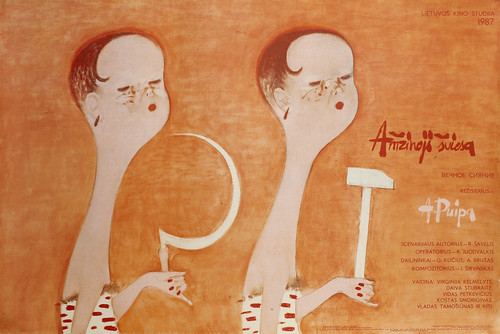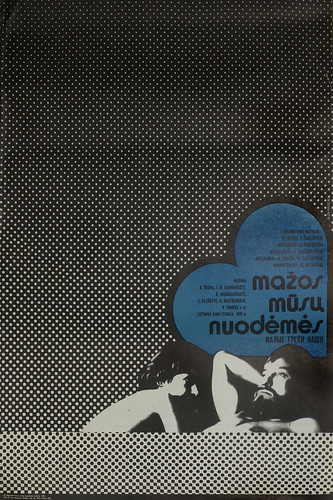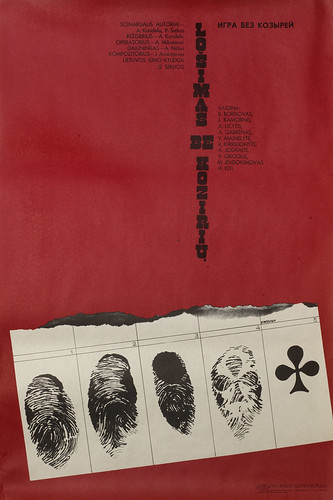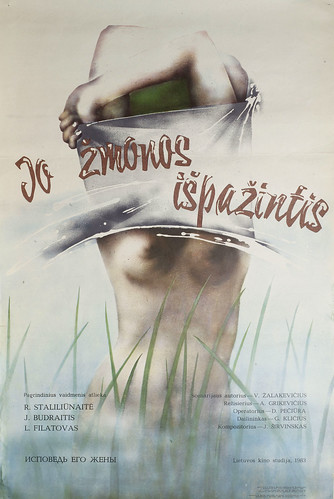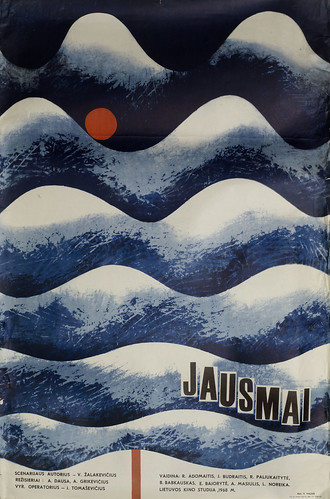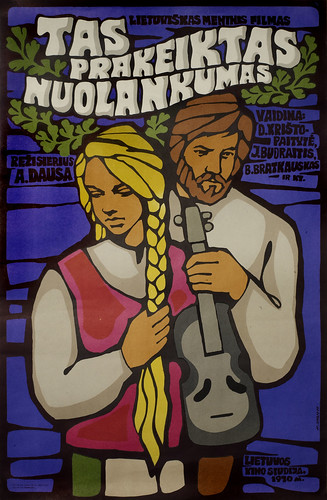Tuesday, 8:00am
5 April 2011
Back in the USSR
Remarkable film posters from Lithuania’s Soviet years
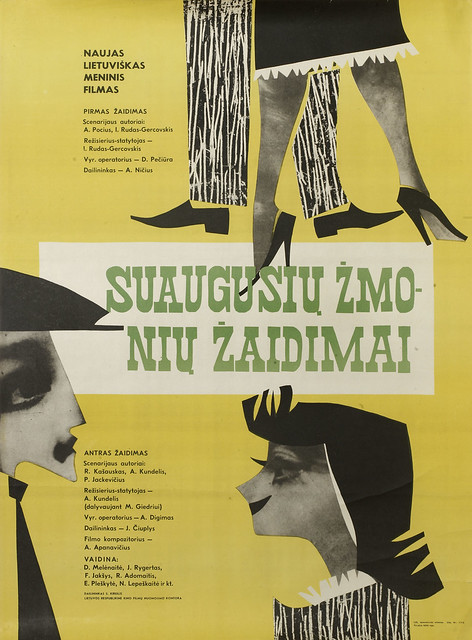
Under Soviet rule, Lithuanian film poster designers had to get their work past the cultural apparatchiks that controlled the ‘Publishing House of the Central Committee of the Communist Party of Lithuania’, writes John Ridpath. Nonetheless, they produced a body of work that is artistically stunning, visually inventive and laced with cautiously coded counter-propaganda.
From Friday 8 April, London’s Rich Mix will be hosting the first-ever UK exhibition of Lithuanian film posters. The examples on show are from the collection of photographer Marta Ovod, who spoke to me about the posters, their makers and Lithuania.
Top: Games Adults Play (Suaugusių žmonių žaidimai), dir. Ilya Rud-Gerovsky, 1967. Designed by Stasys Kireilis, 1967.
JR What drew you to Lithuanian cinema posters?
MO I was born and grew up in Lithuania as a child and have actively enjoyed its unique culture. When asked to write a dissertation for my MA, I decided to choose something related to Lithuania as I felt that there is little known about its arts in the west. Very soon I was delving into Lithuanian cinema, in which posters played a big part. To me the themes and simplicity hark back to the way my childhood looked, innocent and colourful.
Above: An Eternal Light (Amžinoji šviesa), dir. Algimantas Puipa, 1987. Designed by Raimundas Sližys, 1988.
Below: Daydreams of Centenarians (Šimtamečių godos, documentary), dir. Robertas Verba, 1969. Designed by Stasys Kireilis, 1969.
JR Can you share any thoughts about the conditions, inspirations and aspirations of the poster designers?
There is a very informative short film that was made to accompany ‘Declassified’ project, it is currently being translated and subtitled for English speaking audiences (Lithuanian version here). In the film the three graphic artists speak about working under Soviet occupation. They had to go through strict censorship and each poster carries this information as a footnote (which made them easier to catalogue!)
Many of the artists were painters as well as graphic designers, and they saw the film poster as an art form which expressed poetry and the soul of the nation. Many of these ‘canvases’ contain a few hidden symbols that subtly signal a desire for freedom and change, especially in the 1980s. The censors forbade the use of the Lithuanian flag, but it found itself into posters by way of its three strong suggestive colours: yellow, green and red, splattered in a non linear composition.
Above: Our Small Sins (Mažos mūsų nuodėmės), dir. Henrikas Šablevičius, 1979. Designed by Miroslavas Znamerovskis, 1980.
Below: Game Without Trumps (Lošimas be kozirių), dir. Algimantas Kundelis, 1981. Designed by Vidas Drėgva, 1984.
Above: The first semi-nude poster to pass the censors. Ovod comments: ‘When it came to receive a censorship stamp, eyebrows were raised and it was suggested that some elements should be added to make it less shocking. In came in the smoke, and blades of grass. The poster rarely saw the street: such was its value, it ended up being used for bribes, with many ending up in the offices of various officials in Moscow.’
JR There aren’t any post-1990 independence posters amongst the images I’ve seen. Do you have (or have you seen) any posters from this period? Does a similar visual language continue after this point?
MO I own very few post 1990 posters, but have seen some around. Many of the artists that worked under the Soviet occupation continued to do so after 1990, and have often continued with a similar style ethos. They do feel that the time spent over a poster has shrunk and so has its quality, but the short film ends on a positive note: it is never a chore to create a poster but always a celebration. The designers say that creating a poster is like eating a dessert, always a delight!
Above: Feelings (Jausmai), dir. Algirdas Dausa and Almantas Grikevičius, 1968. Designed by Vytautas Valius, 1968.
Below: That Damned Humility (Tas prakeiktas nuolankumas) dir. Algirdas Dausa, 1970. Designed by Miroslavas Znamerovskis, 1971.
8 > 30 April 2011
Lithuanian Film Posters (part of ‘Declassified’)
Rich Mix, 35-47 Bethnal Green Road, London, E1 6LA
www.richmix.org.uk
www.lfc.lt/en
More about Marta Ovod on her website.
Eye is the world’s most beautiful and collectable graphic design journal, published quarterly for professional designers, students and anyone interested in critical, informed writing about graphic design and visual culture. It’s available from all good design bookshops and online at the Eye shop, where you can buy subscriptions, back issues and single copies of the latest issue. For a visual sample, see Eye before you buy on Issuu.

